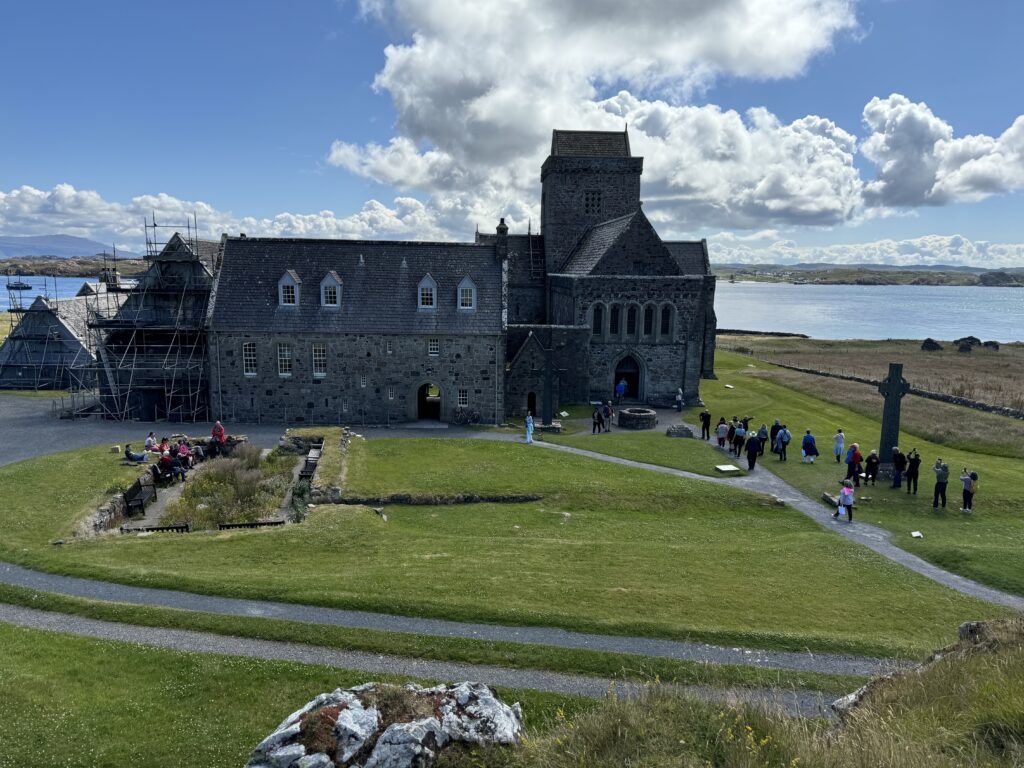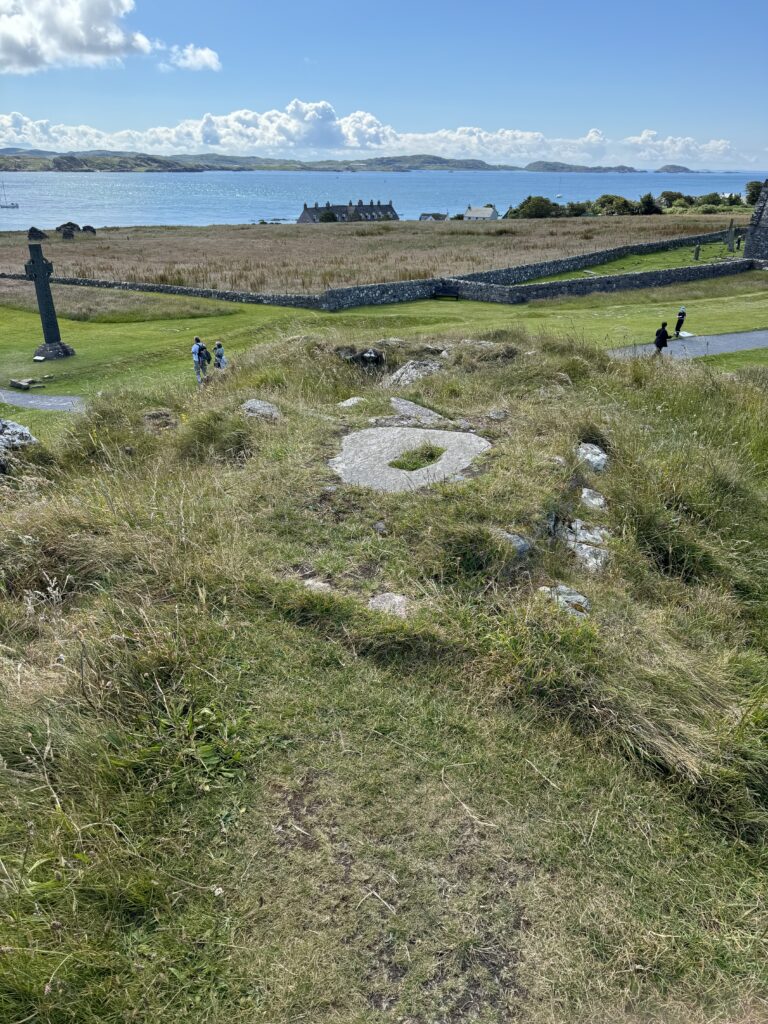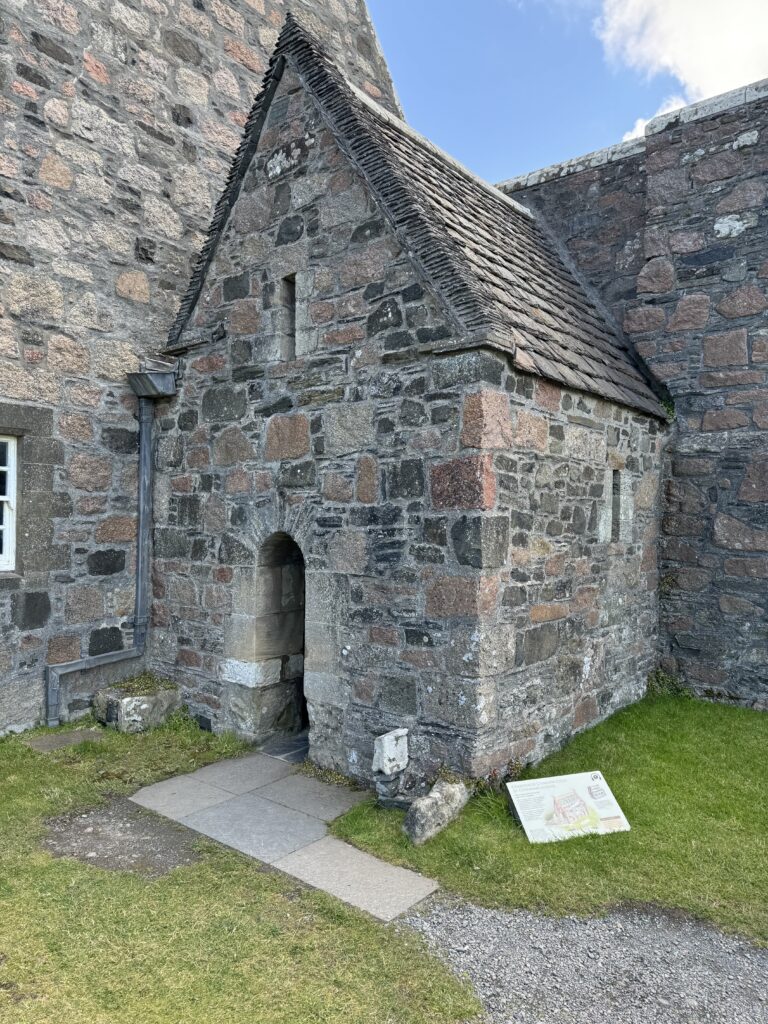
Our day started with some trepidation as we were getting news from back in Houston that Hurricane Beryl was bearing down on the city.
We took comfort in knowing a friend was staying in our home, but by our Scotland afternoon friends back in Houston were waking to heavy rain and high winds as the hurricane unleashed its fury on the city.
As all this was happening back home, we were on the peaceful Isle of Iona. We anchored off the port at Tobermory, Isle of Mull, and took a scenic two-hour drive to the southern most tip of the island, where we caught a ferry for the 1 mile trip to Iona.
We were in Iona because of Columba. In 563 A.D., Columba left Ireland on his mission to take the gospel to Scotland. That plan included establishing a base of operations in Scotland where he could train up men of God and then lead and send them out with the gospel. Columba chose the Isle of Iona as his base. He established a monastery there that survived for the next thousand years.
Iona is only 4 miles long and 1 mile wide. It is far enough from Ireland that one cannot see Ireland on the clearest of days, one of the conditions Columba had for selecting his new base. Iona is also only 15 miles from the Scottish mainland, meaning Columba and his disciples could get there in a number of hours.
After establishing his posse on Iona, Columba and his disciples took missionary trips to the western and northern parts of Scotland where they brought the gospel to the Picts. The Picts were ferocious pagans, not unlike the Celts in Ireland. Some believe they were descendants of the same Celtic people group. The mighty Romans could never definitively defeat the picts in battle and so had built two walls across Britain’s northern frontier (Hadrian’s Wall in 122 A.D. and the Antonine Wall in 142 A.D.) to keep them out.
What the Romans, the greatest military empire in history to that time could not do, Columba and his disciples did with the gospel. There were others involved of course, St. Ninian, for example, but Columba gets the lion’s share of the credit.
Columba’s monastery on Iona produced a dream team of saints including Saint Aidan (a missionary to Northumbria who established the monastery at Lindisfarne), Saint Cuthbert (while not trained at Iona was heavily influenced by Columba), Adomnan (who wrote the Life of Columba in the 7th century and was the abbot at Iona), and Saint Machar (who established the church in Aberdeen, Scotland). The monastery also produced books, the most well known being the celebrated Book of Kells now on display at Trinity College in Dublin.

Today we visited Iona Abbey, which has been rebuilt since but includes remnants of the original structure. We saw the shrine where Columba was buried, although his remains were subsequently relocated. We also visited the spot where Columba’s hut/home was located, looking out over the monastery and across the water to the Isle of Mull. The foundation is still there on a hill about 100 yards from the abbey.

It was ironic to me that almost as soon as Columba died in 597 A.D., Iona became a place of pilgrimage. Even today people come to Iona to escape the world. Columba established the monastery on Iona a place to train men of God and send them out to change the world, and it ultimately became a place where people came to escape the world.
Jesus was very clear about what His disciples could expect in the world.
In the world you will have tribulation, but take courage; I have overcome the world
John 16:33
It’s natural to want to escape the trouble of the world, and to take a vacation from the world occasionally, is not a bad thing. But for the Christian to escape from the world is to abandon it, and that is exactly what Columba refused to do. He was intentional about what he set out to do, and like Patrick in Ireland, he was able to claim a country for the Kingdom.
In a way, Iona was a place for escape for us today. It was a peaceful respite from our busy lives and the storm in Houston, but it was also a reminder of the Kingdom, which is not to escape from the world but to engage it and change it. GS
